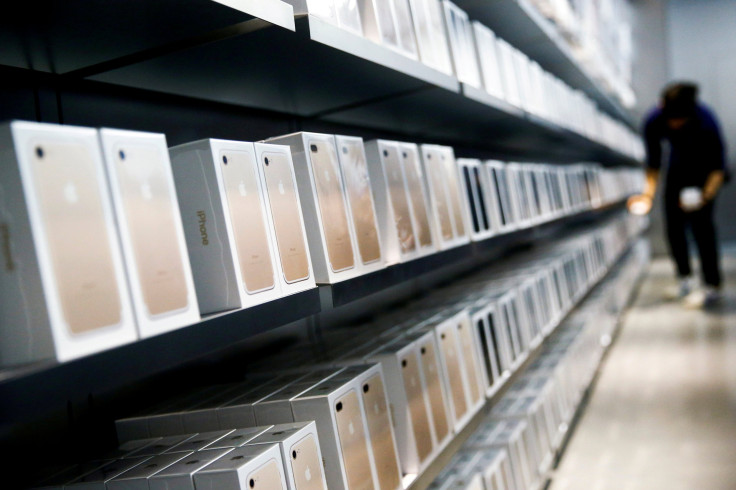Apple Inc. (AAPL) Stock Price: iPhone Sales Decline In China, Worldwide, But Holiday Purchases Could Help Tech Giant Recover

While Apple Inc. (AAPL) narrowly beat analysts’ fourth-quarter forecasts Tuesday with earnings per share (EPS) of $1.67 on revenues of $46.94 billion, the Cupertino, California-based tech giant has seen three straight quarters of year-over-year revenue declines.
iPhone sales—which rose from the previous three-month period, likely due to the release of its newest models during the quarter that ended in September—have fallen on a year-over-year basis for three straight quarters. The company sold nearly 3 million more during the fourth quarter of 2015 than during this year’s fourth quarter, for example.
Apple’s share price dipped from over $118 to around $115 in the after-hours on Tuesday before rising back above the $118 mark on Wednesday morning.
But the company predicted a bump in sales for the holidays, with expected revenues of between $76 billion and $78 billion—topping last year’s $75.8 billion for the first quarter, which ends in December. Apple regularly sees a spike in sales during its first quarter, but many analysts have been skeptical as to whether the company can break its three-quarter streak of year-over-year declines in revenue and sales.
“Management hasn’t diversified the revenue stream,” BCG Partners analyst Colin Gillis told the Associated Press, pointing to the increasingly crowded smartphone market that faces slower overall growth. “Counting phones is a horrible way to live and die every quarter.”
Despite main rival Samsung’s botched release this year of its Galaxy Note 7, which the company urgently recalled following reports of the phone’s battery catching on fire, Apple didn’t receive any boost in fourth quarter sales compared to the same period last year. Making matters worse for the latter company, Google has finally become a major competitor not only in terms of software, with its Android operating system growth rapidly outpacing that of Apple’s iOS, but in terms of hardware as well, with the recent release of its popular Pixel phone.
And growth in the general smartphone market has begun to level off. After sales increased 42.6 percent in 2013 and 28.4 percent in 2014, the number of units sold only rose 14.4 percent last year, to 1.423 billion phones from 1.244 billion the previous year.
That falling industry growth is particularly acute in what was once Apple’s second-largest market, but is now its third-largest: In China, revenues grew 17 percent in 2015 but fell 30 percent in this year. The company’s finance chief Luca Maestri told the Financial Times that he expected sales in China to improve and that the decline could be attributed to general “volatility in emerging markets.”
Adding to Apple’s woes, the unexpected popularity of the larger iPhone 7 Plus led to a shortage of the more expensive, roughly 3-by-6-inch phone.
“We cannot fulfill all the demand that is out there right now,” Maestri told Reuters. “You can’t just shoot iPhones out of an assembly like at the speed of a bullet. Apple does things to perfection. There is no need to rush and create an inferior product the way Samsung did.”
© Copyright IBTimes 2024. All rights reserved.












